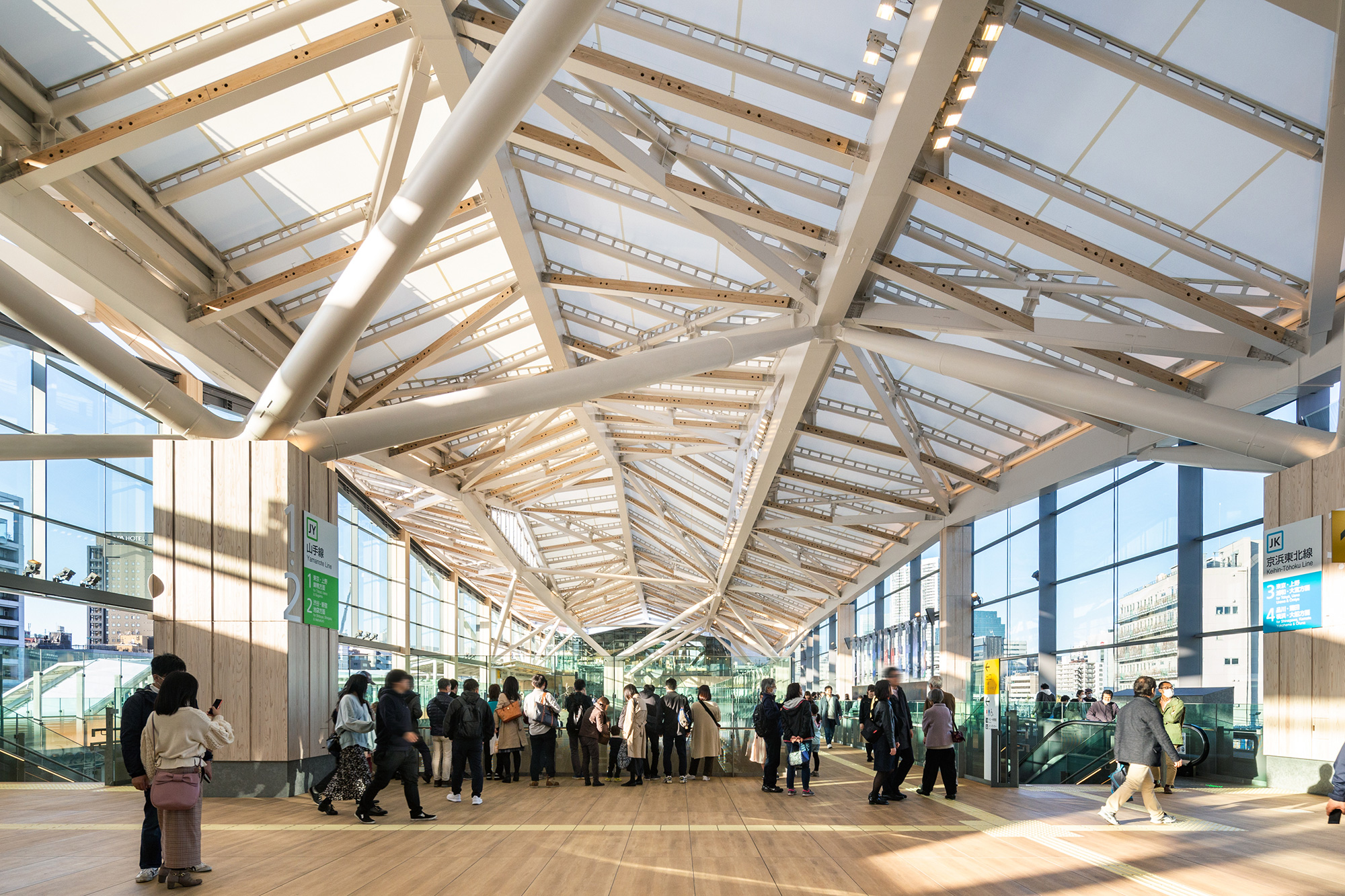Takanawa Gateway Station
Japan Tokyo Minato-ku
Kengo Kuma and Associates

© East Japan Railway Company
This is a new station on the Yamanote line that loops around central Tokyo. The word "Gateway" was added to the station name with expectations that it would be a new face for Tokyo and serve as a portal connecting the sea and land. On the siteof the East Japan Railway Company yard adjacent to the station, a large-scale redevelopment project i planned, which will result in a sub-city in southeast Tokyo that acts as a node connecting Haneda Airport, Shinagawa Station, and Tokyo Station. The new station forms the core of the redevelopment initiative.
An expansive roof with a membrane structure was employed to realize a bright, liberating station building that welcomes the community and serves as a public commons for the district. The roof covers both the station and the surrounding area, linking them together.
A semi-transparent Teflon membrane with a photocatalytic self-cleaning function was stretched over a frame of steel and laminated wood, so the interior is filled with soft light generated by the membrane and the wood. This membranous roof is a product of state-of-the-art technology, but at the same time evokes essential aspects of Japanese culture such as shoji paper screens and origami, qualifying it as a new face for Tokyo. The warmth and softness of historic wooden station buildings has been resurrected usingthe technology of today.
An expansive roof with a membrane structure was employed to realize a bright, liberating station building that welcomes the community and serves as a public commons for the district. The roof covers both the station and the surrounding area, linking them together.
A semi-transparent Teflon membrane with a photocatalytic self-cleaning function was stretched over a frame of steel and laminated wood, so the interior is filled with soft light generated by the membrane and the wood. This membranous roof is a product of state-of-the-art technology, but at the same time evokes essential aspects of Japanese culture such as shoji paper screens and origami, qualifying it as a new face for Tokyo. The warmth and softness of historic wooden station buildings has been resurrected usingthe technology of today.


